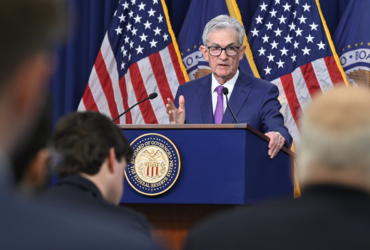A big swing and miss for the economy with regards to jobs, according to the Bureau of Labor of Statistics monthly jobs report…(BLS)
- Total nonfarm payroll employment rose by 194,000 in September.
- Economists were much more optimistic forecasting job growth closer to 500k for September
Leisure and hospitality lead the way creating 74,000 jobs in September. Professional & business services were first runner up creating 60,000 jobs followed by retail (+56,000), transportation & warehousing (+47,000), and the information industry (+30,000).
- Local government education saw a loss of 144,000 jobs and state government education lost 17,000 jobs in September.
Oddly enough, despite weak job creation the unemployment rate fell somewhat significantly…
- The unemployment rate fell by 0.4 percentage point to 4.8% and the number of unemployed persons fell by 710,000 to 7.7 million.
- Neil Irwin noted on Twitter that “In the last cycle, that rate wasn’t achieved until January 2016—6.5 years after the recession technically ended. This time, 1.5 years. Aggressive fiscal response for the win.”
NOTE: The number of long-term unemployed saw a big drop in September, falling 496,000 to 2.7 million. Meanwhile, The number of persons on temporary layoff, at 1.1 million, changed little in September.
Wages were also a bright spot for those looking for a silver lining in this report…
- Average hourly earnings increased to $30.85, a 4.5% increase when compared to wages one year ago.
- Weekly earnings were also saw a 4.5% year-over-year increase to $1,073.58.
NOTE: The PCE Index, the gold standard when it comes to inflation data, shows 4.3% inflation in August. So it does appear as if wages are keeping up with inflation.
One of the more shocking results of this report was the complete lack of response to the end of extended benefits at the start of the month. Many Republicans in Washington had assumed that extended benefits was depressing employment. Rep. Jim Jordan told Fox News back in May “Seven million jobs open and last month only [about] 260,000 were filled. Doesn’t take a genius to figure this out...When you pay people not to work, you shouldn’t be surprised when you can’t find workers.“
- Not only did we not get a bump in the payroll data, the labor participation rate actually declined month-over-month to 61.6% from 61.7% in August.
- This result probably shouldn’t be too surprising. At the start of September, The Wall Street Journal reported that states that had cut extended benefits saw a limited impact on job growth…(Wall Street Journal)
With 5 million fewer jobs in the economy than before the pandemic the big question is why? I asked Scott Lincicome from the CATO Institute on Twitter what could be causing it and he responded succinctly, “retired. sick/dead. home (life choice for a parent, eg). self-employed. not able to enter the country. lotta reasons”
It’s very interesting. In the mid to late ’10s it was believed we had reached full employment. Yet, every month the economy found a way to create hundreds of thousands of jobs and tight labor market leading to wage growth seemed unattainable. Now we seem to to be in a completely opposite situation. Full employment appears to be miles away but wage growth and job openings are signs of an extremely tight labor market. It is just weird…






Got a Questions?
Find us on Socials or Contact us and we’ll get back to you as soon as possible.